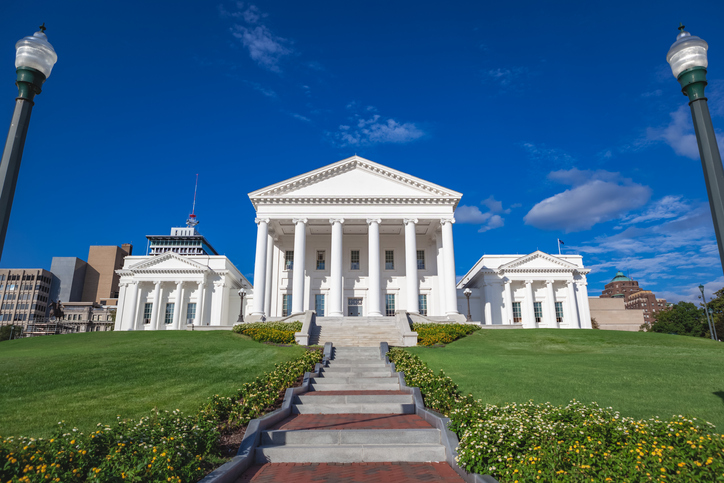H.B. 294 would amend and expand Virginia’s Education Improvement Scholarships Tax Credits Program (EIS) to make the victims of “assault, battery, bullying, harassment, hazing, kidnapping, or robbery on school property, on a school bus, or at a school-sponsored activity” eligible to take advantage of it.
Expanding this program would be an important step forward in advancing the goal of providing a safe learning environment for all Virginia children.
Feeling helpless and being unable to act while your child is in physical or mental pain is about the worst ordeal a parent can go through.
Yet according to Virginia school children themselves, public schools in the Old Dominion are having a tough time keeping children physically or mentally safe.
The latest data from the biennial Youth Risk Behavior Survey from the Centers for Disease Control and Prevention shows over one in six Virginia high school students, 17.4 percent, were bullied on school property in 2019, while another 13.9 percent of state high school students reported being cyberbullied.
Another 7.9 percent of Virginia high school students reported being threatened or injured with a weapon on school property in 2019, while 8.6 percent reported skipping school at least once in the last 30 days due to concerns for their safety. Disturbingly, 16 percent of Virginia high school students said they had seriously considered attempting suicide in 2019, while 7 percent reported actually attempting it.
The federal Every Student Succeeds Act (ESSA) permits students to transfer to another public school under ESSA’s Unsafe School Choice Option provision, but only if their current public school meets the state definition of a “persistently dangerous” school. Because states define unsafe schools so narrowly, fewer than 50 American public schools out of nearly 100,000 are labeled “persistently dangerous” each year.
Students should not have to wait years at a time or become victims of violent crime before their parents are allowed to transfer them to safer schools, which is current policy. Amending EIS for bullied, battered, and harassed students is a logical, necessary step and one that would immediately improve the lives of many commonwealth children and give their parents peace of mind.
Copious empirical research on school choice programs like EIS makes clear these programs offer families improved access to high-quality schools that meet their children’s unique needs and circumstances, and that these programs improve academic performance and attainment and deliver a quality education at lower cost than traditional public schools. To highlight one example, an analysis released late last year found the Education Improvement Scholarships Tax Credits Program has saved Virginia taxpayers between $77.9 million and $131.6 million through Fiscal Year 2018.[4] This works out to a savings of between $6,444 and $10,889 per each student participating in the program.[5]
Additionally, these programs benefit public school students and taxpayers by increasing competition, decreasing segregation, and improving civic values and practices.
Research also shows students at private schools are less likely than their public school peers to experience problems such as alcohol abuse, bullying, drug use, fighting, gang activity, racial tension, theft, vandalism, and weapon-based threats. There is also a strong causal link suggesting private school choice programs improve the mental health of participating students.
Any fears of a mass exodus from the commonwealth’s public school system if EIS is expanded to include bullied students are highly likely to be unsubstantiated, and should not be used as justification to vote against its expansion. We know this by real-world example. Florida enacted a tax-credit scholarship program for bullied students, the Hope Scholarships, in 2018. When it went into effect in 2019 only 127 children made use of the program, while 436 did in 2020, and 393 in 2021. Programs like the Hope Scholarship, or EIS if it is expanded, are truly last resort options.
An 2019 survey by Phi Delta Kappa (PDK) reveals more than one-third of American parents fear for their child’s safety at school. This number rises to 48 percent for parents earning less than $50,000 per year. This represents a large jump from 2013, when only 12 percent of respondents answered they feared for their child’s safety. A 2020 survey by PDK finds 18 percent of parents think bullying, violence, and relative safety are not just one issue of concern, but are in fact the biggest problem facing public schools.[11]Think about that. Practically one out of every five parents in the country are more concerned with the safety of their children in school than the education they are receiving.
The Virginia public education system’s failure to protect children and provide parents with reasonable alternatives is precisely why this program is so desperately needed.
Every Virginia family should have the opportunity to remove their child from an unsafe school environment if need be, and expanding the Education Improvement Scholarship Tax Credits Program could help that become the reality.
Adapted from Cameron Sholty, “Testimony Before the Virginia House Education K–12 Sub-Committee Regarding HB 294,” The Heartland Institute, January 26, 2022.
